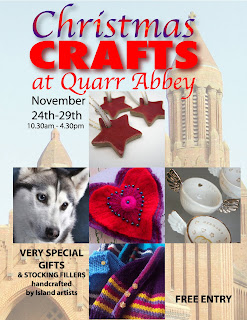In the process of making pots – especially when throwing - there’s a lot of leftover clay and ‘slop’. Luckily clay is extremely easy to recycle and use again. As long as the clay hasn’t been fired you can keep using it over and over, and this process of recycling clay is called ‘reclaiming’.

In my studio I don’t have a dedicated sink, so all my slops go into buckets. I make sure only ‘clean’ slop goes in (no nasty bits of sponge or dirt) and they soon fill up! The clay settles just like mud in a pond and every-so-often I scoop out the clear water that sits on top. Most books advise waiting to let clay dry out completely - until bone dry - before breaking up, soaking again and then reclaiming. However, I find reclaiming direct from slop works perfectly well for the small quantities I use and the purposes I use reclaim for (as will be explained!). So when I’m ready to start reclaiming, I pour off as much water as possible until I’ve got a bucket of sludge clay.

This is the messy part! I usually use spoons rather than my hands to ladle out the sludge - which can be a mixture of thick and runny clay. If the clay has been standing for a while, this can be pretty smelly sometimes too – a bit like a river at low tide! I scoop out the sludge and lay it onto plaster blocks. I have two flat plaster blocks about 2cm thick, which I use for reclaim. Plaster absorbs moisture and helps speed up the drying process. Of course I don’t want the clay to dry out too much, so once I’ve ladled out what I need, I keep an eye on it throughout the day. In the summer the clay can dry in a matter of hours; in the winter it can take several days.

I can tell if the clay has dried out enough by testing the edge – it should start to lift off the plaster in one big lump. I like my clay to be a bit on the soft side though when I reclaim – still a bit sticky – so it's less likely to dry out too much accidentally while in storage. When the clay is ready, I tip it onto a wedging board. I use wood to wedge on, and since wood absorbs moisture, this takes out the last bits of stickiness in the clay.
I don’t have a pugmill so the next step for me is to wedge the clay in the usual way using a wire. This eliminates any air from the reclaimed clay and evens out the consistency. Finally I shape the clay into small blocks or balls and bag them inside plastic bags. I usually spray water into the bags first and then really wrap the plastic closely around the clay to minimise the air left inside. Then I keep my reclaim in a damp plastic tub with a lid and store it in a cool, low corner of the studio.

It’s best to let reclaim mature for at least six months before using it again, especially for throwing. The experts say this is all to do with the molecular structure – in fact the older the clay the better apparently. It can be useful therefore to date reclaim at the time of making to keep track of how old it is. Having such a small studio space though means I can’t really store too much clay while I wait for it to mature. So I use reclaim almost straight away for throwing bats and for supporting pots during turning. This works out really well for me because it means I don’t waste ‘brand new’ clay on a bat for instance – clay that would otherwise go straight back into the slop bucket at the end of the day!
Anyway, that’s how I reclaim clay!












































